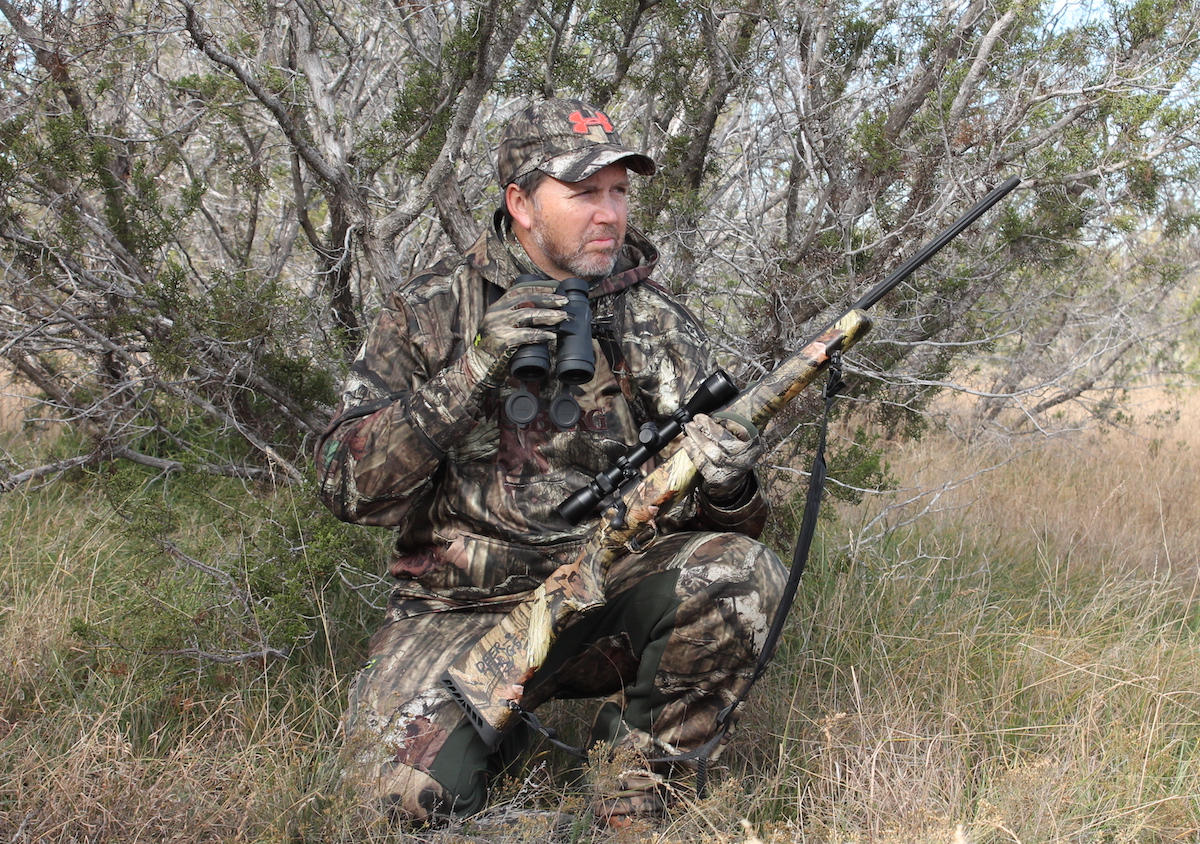
If you pre-select the right gear, you will have a much better chance at having a successful hunt. Image by author.
SERIES
- Part 1: Top Four Tips To Scouting Now
- Part 2: Early Season Deer Stand Tips
- Part 3: Follow the Moon
- Part 4:Five Top Deer Gear Essentials
- Part 5: Five Top Backpacks
- Part 6: Essential Trail Camera Know-How
- Part 7: Making The Call
- Part 8: Keeping Warm
Hunting is a gear intensive sport, some types of hunting more so than others. Waterfowlers, I learned early in my first introductory days of hunting ducks and geese, can require a lot of gear. Deer hunting not so much. But there are items, beyond the obvious firearm or bow (and ammo or arrows), that can really make your hunts more successful, enjoyable and even safer.
Boots
Start every hunt off on the right foot. Before you do a single thing to start each scouting session or hunt, you start walking. From the house, to the vehicle down the path or along the field edge, those steps add up. Never, ever wear a new pair of boots for the first time on a hunt … unless you enjoy the possibility of rubbing some hunt-ending blisters on your heels. Short scouting sessions or work around the house is a great way to start breaking them in so they fit.
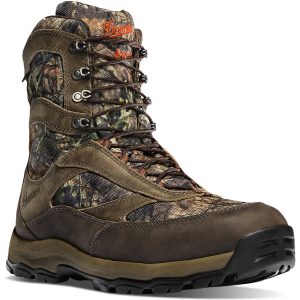
The Danner High Ground boot is designed to offer hunters a fast and agile platform. All images courtesy of manufacturers.
Pick the right ones for the terrain you’ll be hunting, the time of year and to match your style of hunting. Plan to walk and stalk on high, dry, or hilly terrain? Opt for a lightweight boot with a sure-gripping Vibram sole and good ankle support with little to no insulation. Looking to multi-season the boot? Go with light insulation in the 400-600 gram Thinsulate range. No matter where you hunt, go with a waterproof boot. It doesn’t matter if it’s leather, Cordura or some other technical material, make it waterproof. From standing water to wet grass, wet feet are lousy. Hunting flood plains or swamps? Go with a good rubber knee-high boot. And if you will be sitting a freezing cold stand for hours in the snow or rock-bottom temps, a well-insulated pack boot is a virtual necessity.
Top choices:
Calls
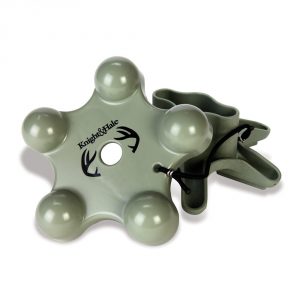
The Knight & Hale Rack Mag Rattling System is ideal for long-range calling and provides effective clashing sounds.
Two calls every deer hunter has to carry with him or her: A grunt tube and a rattle bag (or horns). Sure, there are bleat calls and snort-wheeze calls and all of them are great at the right time and place, but the two essentials are something to help you grunt with some volume and something to rattle with. Why? Even if you are not one for calling, a grunt tube is critical for those times you spot a buck that’s just out of range but not working your way. Hit him with that grunt tube and many times you can turn him your way. As far as rattling, I’ve had better luck with that in the two weeks leading into the peak of the rut; but at the right times, it can bring bucks scrambling into your setup.
Top choices:
- Primos Rut Roar
- Flextone Bone Collector – Brotherhood
- Ruttin’ Buck Rattling Bag
- Knight & Hale Rack Mag Rattling System
Knife
Once your trophy is on the ground, a good knife suddenly becomes your most needed tool in your pack. A 3½-inch lock blade like the classic Buck 110 (still one of my favorite knives) or a sturdy fixed-blade drop point knife is ideal. With it you can finish off a wounded deer, field dress the deer right on the spot and skin it and cut the meat from the bone back at camp. It can also be used to perform a variety of cutting chores in a number of in-the-field or survival situations.

The Browning Featherweight Fixed Semi-Skinner is a high-quality fixed-blade hunting knife with a drop point blade.
Top choices:
- Buck 110 Folding Hunter Knife
- Browning Featherweight Fixed Semi-Skinner
- Real Avid Viscera
- SOG Huntspoint Boning
Flashlight
If you hunt hard and want to get in or stay in your stand at those key moments when peak movement and legal shooting light intersect, you’re going to have to navigate the forest in the dark. There’s always that inevitable situation where you shoot a deer right as the sun is fading and you need to trail it in the dark. Both of these situations demand a good light, and not one of those cheap plastic models on the rack as you check out at Home Depot. I’m personally a huge fan of compact, jetliner-bright tactically inspired LED flashlights. Companies like Surefire paved the way for this market and still owns a lot of it and for good reason: Their lights kick ass. They can also be expensive (though they have come out with some great competitively priced models in recent years) and tend to utilize pricier, but juice-generating CR123 batteries.
[one_half]
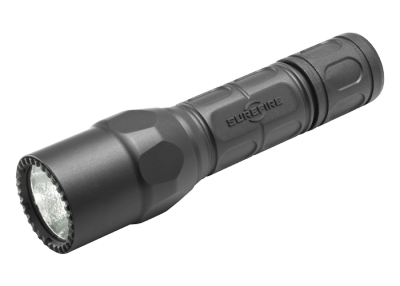
The Surefire G2X Pro dual-output LED flashlight provides either 320 or 15 lumen power for adaptability.
[/one_half]
[one_half_last]
[/one_half_last]
There are countless companies now in the handheld lighting market so plenty of great options abound. For back up, I often tote two compact lights. They take up little space in a pack or pocket, but flood the forest with light when looking for a spot of blood or just wondering where the heck your stand is in the pitch black of early morning. These lights are also great for safety when walking out of the woods in low light. I know some guys are worried about spooking deer, but to ensure no one mistakes me for game in low light and to avoid busting an ankle from stepping in a hole or tripping over a downed tree, using a light is simply a wise action. Want to keep your hands free? Go with a headlamp, also an excellent choice.
Top Choices:
Binocular
As a hunter, you are only as good as you can see, and with deer moving about at various distances, often through cover and in the low light of early morning or late afternoon, that means amping up your vision. If I climb into my deer stand before I realize I forgot my binos, I feel almost as if I climbed into the stand without my gun; they’re that important to how I operate. For hunters required to size-up or age a buck on the hoof prior to pulling the trigger, a good optic is absolutely vital in order to pull out the details from the width of the rack to the sway in the back and facial details. In open country, they are also critical, where spot and stalk hunting requires a hunter to cover more ground through glassing than could ever be done by foot. But they are also critical for glassing details in nearby thick cover, such as searching for the twitch of an ear of a bedded deer. For most whitetail hunting situations, a compact to mid-size binocular packs more easily and works more than fine. For big country hunting, opt for a full-size model in order to minimize eye strain and enable more light to pass through the prisms and glass.
Top Choices:
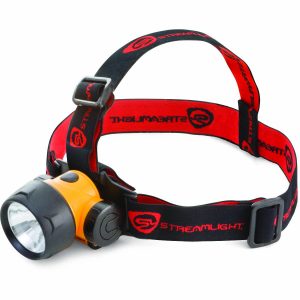
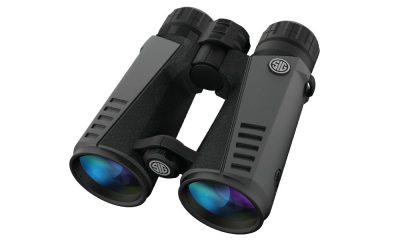
ALL of these brands SUCK because they don’t offer reasonable choices in widths. I have wide fee, and I refuse to punish my feet with narrow shoes, which includes ALL of these offerings. WAKE UP SHOE MANUFACTURERS! WE ARE NOT ALL ALIKE! You are losing sales by only offering one or two widths in a shoe length. A pox on all of you.
Same problem when I have narrow feet. Try to find one of them in a reasonably priced boot.
I would have GPS number one or two…and if only 5 things, the call has to go